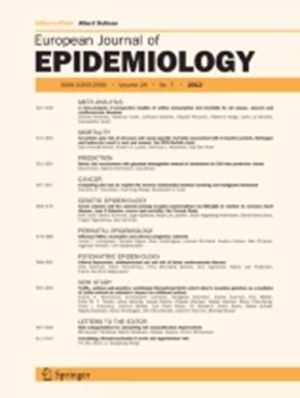How hazard ratios can mislead and why it matters in practice.
IF 5.9
1区 医学
Q1 PUBLIC, ENVIRONMENTAL & OCCUPATIONAL HEALTH
引用次数: 0
Abstract
Hazard ratios are routinely reported as effect measures in clinical trials and observational studies. However, many methodological works have raised concerns about the interpretation of hazard ratios as causal effects. These concerns are often related to three points: (i) depletion of susceptible individuals leads to selection bias and complicates the causal interpretation of the hazard ratio, (ii) the hazard ratio is not collapsible, and (iii) the conventional proportional hazards assumption rarely holds in medical studies. We discuss the relation between these three points. We ground our presentation on an example about effect of endocrine therapy in reducing the risk of recurrence or death in a population of patients with breast cancer. We also describe why survival curves and risk differences do not exhibit any of the undesirable properties of hazard ratios.风险比是如何产生误导的,以及为什么它在实践中很重要。
在临床试验和观察性研究中,风险比通常被报道为效果指标。然而,许多方法学研究对将风险比解释为因果效应提出了担忧。这些关切往往与三点有关:(i)易感个体的减少导致选择偏差,使对风险比的因果解释复杂化;(ii)风险比不可折叠;(iii)传统的比例风险假设在医学研究中很少成立。我们讨论这三点之间的关系。我们的演讲基于一个关于内分泌治疗在降低乳腺癌患者复发或死亡风险方面的效果的例子。我们还描述了为什么生存曲线和风险差异没有表现出任何危险比的不良性质。
本文章由计算机程序翻译,如有差异,请以英文原文为准。
求助全文
约1分钟内获得全文
求助全文
来源期刊

European Journal of Epidemiology
医学-公共卫生、环境卫生与职业卫生
CiteScore
21.40
自引率
1.50%
发文量
109
审稿时长
6-12 weeks
期刊介绍:
The European Journal of Epidemiology, established in 1985, is a peer-reviewed publication that provides a platform for discussions on epidemiology in its broadest sense. It covers various aspects of epidemiologic research and statistical methods. The journal facilitates communication between researchers, educators, and practitioners in epidemiology, including those in clinical and community medicine. Contributions from diverse fields such as public health, preventive medicine, clinical medicine, health economics, and computational biology and data science, in relation to health and disease, are encouraged. While accepting submissions from all over the world, the journal particularly emphasizes European topics relevant to epidemiology. The published articles consist of empirical research findings, developments in methodology, and opinion pieces.
 求助内容:
求助内容: 应助结果提醒方式:
应助结果提醒方式:


